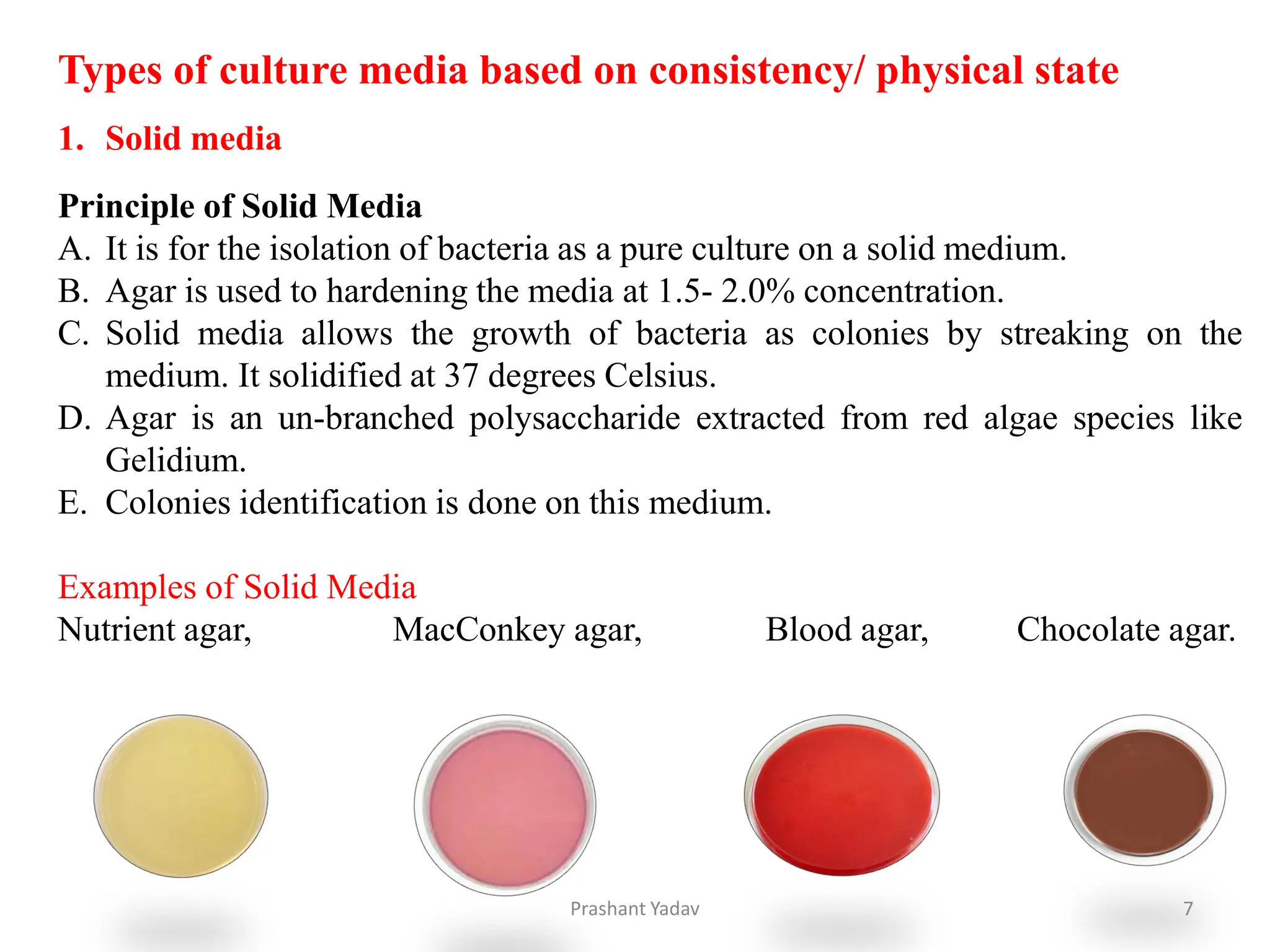The document provides a comprehensive overview of culture media used for growing microorganisms, detailing their history, ingredients, and types based on consistency and constituents. It includes the preparation methods for various media such as solid, semi-solid, and liquid, and highlights examples like nutrient agar, blood agar, and MacConkey agar. Additionally, the text explains the significance of culture media in laboratory diagnostics and the growth of specific bacteria.






















































